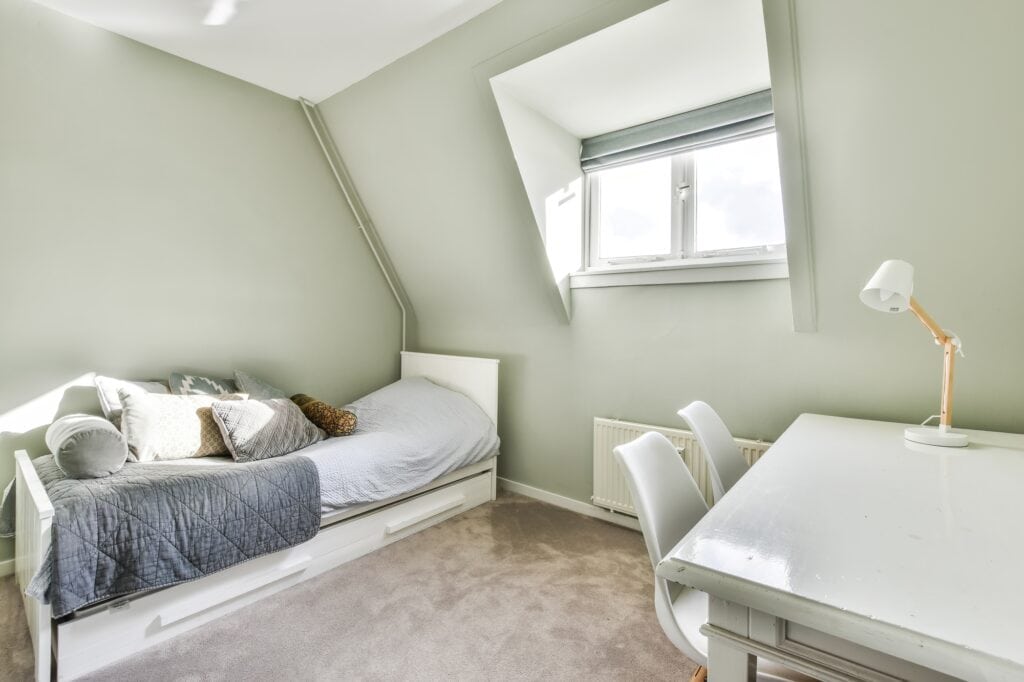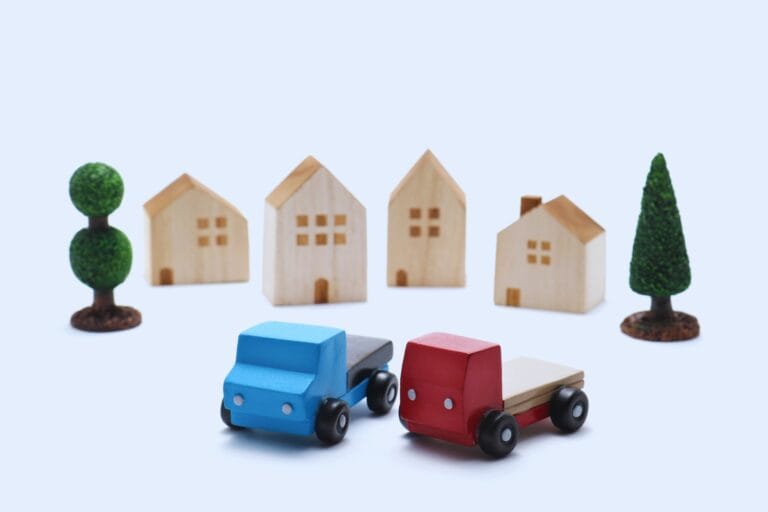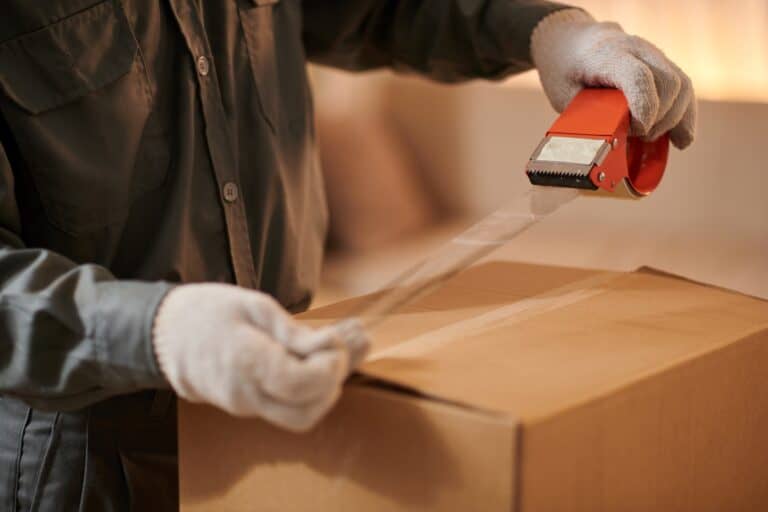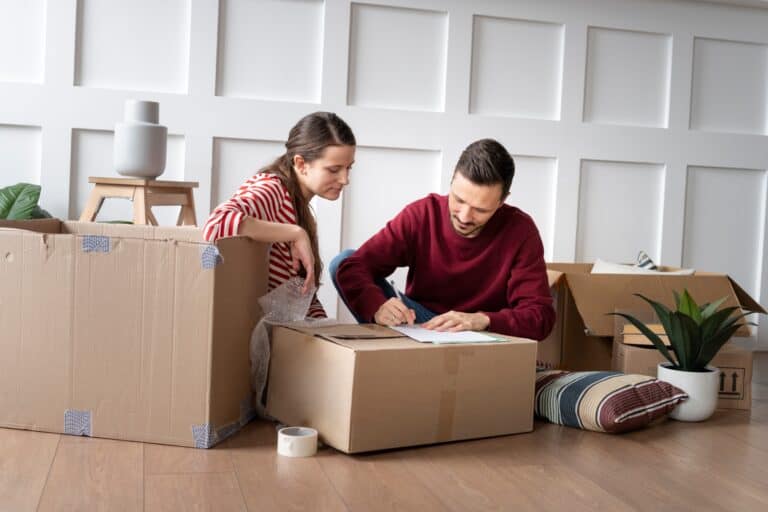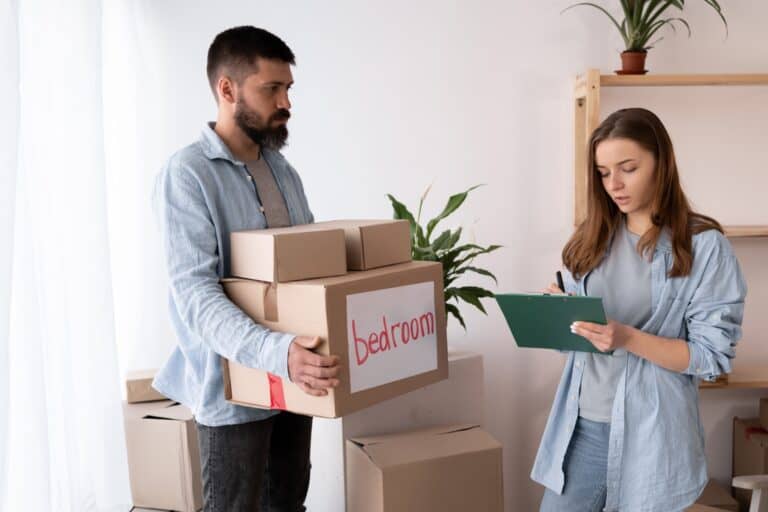Figuring out how to pack household items safely for a move is crucial to avoid damage and stress. This guide provides practical steps, from decluttering to using the right packing materials and protecting fragile items. Let’s explore these tips to make your move smooth and secure.
Key Takeaways
- Declutter before packing to simplify the moving process and save on costs, ensuring you only transport items you truly need and want in your new home.
- Invest in quality packing materials and label boxes clearly for a smooth move, as this will protect your belongings and make unpacking more efficient.
- Pack an essentials box with critical items for immediate access upon arrival, so you can settle in comfortably without rummaging through multiple boxes.
Declutter Before You Start Packing
Before you start packing, declutter your home. This step not only simplifies the packing process but also saves money on moving costs by reducing the number of items to transport. Disposing of unnecessary items allows you to focus on packing essentials, making moving house more efficient and less stressful.
Organise unwanted items into piles for selling, donating, or discarding. This method streamlines the decluttering process, ensuring you only take necessary items with you. Prioritise decluttering to make the entire moving process smoother and more cost-effective.
Conduct a Room-by-Room Audit
Conduct a room-by-room audit to declutter effectively. Begin in less-used rooms to build momentum, then tackle frequently used areas. Thoroughly examine storage areas, kitchens, and dining rooms, and eliminate unnecessary items.
This methodical approach helps you manage the decluttering process without feeling overwhelmed, ensuring that each room is tackled efficiently.
Organise a Car Boot Sale
A car boot sale is a fantastic way to declutter your home and make extra money before you move. It allows you to sell unwanted items, reducing the number of things to pack and transport. Additionally, it’s a fun way to engage with your community and find new homes for items you no longer need.
If a car boot sale isn’t feasible, consider selling on eBay, Vinted, Facebook Marketplace, or Gumtree. These platforms help you reach a broader audience, ensuring unwanted items are put to good use and simplifying your move.
Gather Quality Packing Materials
Obtaining the right packing materials is crucial for a safe move. Essential supplies include sturdy cardboard boxes, bubble wrap, packing paper, and heavy-duty packing tape. These materials protect your belongings during transit, ensuring that fragile items remain intact.
Using different box sizes tailored for specific items, such as kitchenware or electronics, helps prevent damage and makes packing more organised. Though it may seem like an added expense, investing in quality packing materials and small boxes safeguards your possessions and reduces the risk of breakages.
Invest in Sturdy Cardboard Boxes
High-quality, strong packing boxes ensure your items are well-protected during transit. Avoid overloading pack boxes with heavy items to minimise the risk of breakage. Instead, pack heavy items in smaller boxes to prevent damage and make handling easier.
Reserve larger boxes for lighter items to avoid the risk of breaking underweight. This strategy simplifies the moving process and ensures belongings arrive safely at your new home.
Use Bubble Wrap for Fragile Items
Bubble wrap is essential for protecting fragile items such as glassware, ceramics, and other breakables during a move. Ensure the cushioned side of the paper or bubble wrap faces the items for maximum protection. Individually wrap common fragile items like wine glasses and porcelain dishes, securing them with packing tape.
For added protection, pack fragile items in sturdy boxes with additional padding like crumpled paper or packing peanuts. This method prevents shifting during transit, reducing the risk of damage.
Secure with Packing Tape
Securing your boxes with packing tape prevents them from opening during the move. Fold in the shorter tabs of the box first, followed by the longer ones, and tape around the corners and edges to ensure a tight seal.
A packing tape dispenser can speed up the process and help apply the tape evenly, ensuring boxes remain intact and items stay secure throughout the move.
Label Boxes Clearly
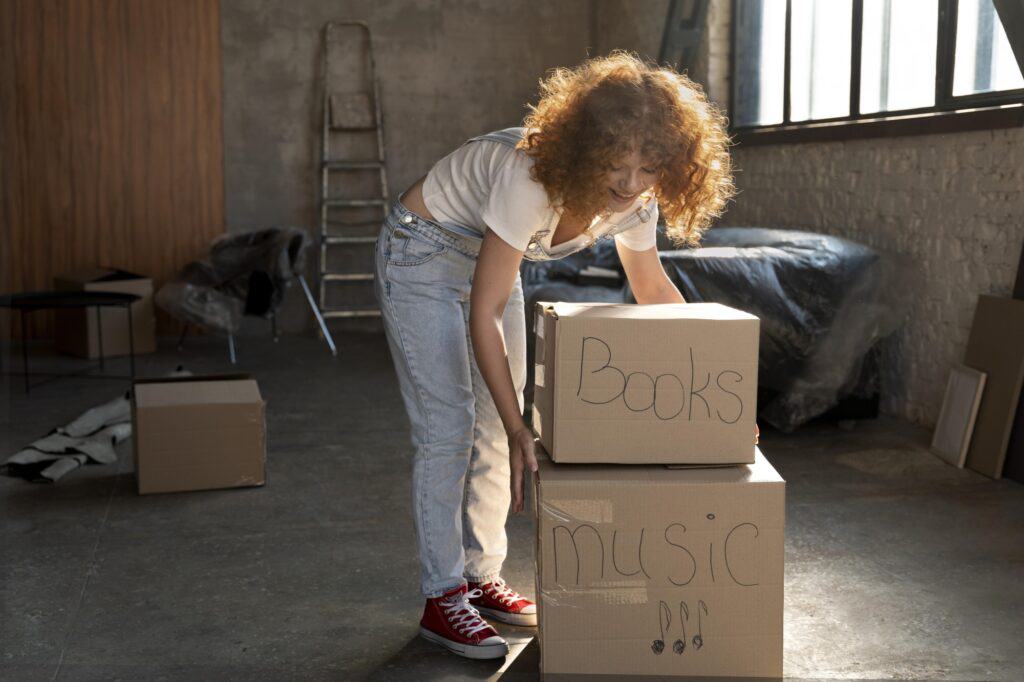
Clear labelling of boxes is crucial for a smooth unpacking process. Include details like the room the box came from and an outline of its contents. This practice helps you quickly find what you need without rummaging through multiple boxes.
Label heavy boxes explicitly as ‘heavy’ to ensure careful handling. Keeping related items together and being specific with labelling can make a significant difference in staying organised during your move.
Use Permanent Markers
Permanent markers ensure labels remain visible and legible throughout the move. This simple step helps quickly identify the contents of each box, making it easier to organise and unpack your belongings at your new home.
Colour-Code Your Boxes
A colour-coded labelling system simplifies unpacking by making it easy to identify which boxes belong in which rooms. Assign a different colour to each room and use corresponding coloured markers or stickers on your boxes. This method enhances efficiency and ensures that boxes are placed in the correct rooms upon arrival.
Pack an Essentials Box
Packing an essentials box is key for a stress-free move. This box should contain crucial items needed immediately after moving in, such as toiletries, medications, important documents, and basic kitchen supplies. Keep it with you during the move for easy access.
Include items like clothing, device chargers, items for children and pets, a kettle, mugs, glasses, tea, coffee, and snacks in your essentials box. Packing these essentials ensures you have everything needed to settle in comfortably on your first night in your new home.
Include Toiletries and Medications
Pack toiletries and medications in your essentials box. Use cling film to cover the openings of toiletries to prevent spills during transport. Include daily necessities such as shampoo, conditioner, toothpaste, and any prescription medications you will need immediately.
Organise these items for easy access upon arrival at your new home. This preparation ensures you have all necessary personal care and health items readily available during the transition.
Pack Important Documents
Keep important documents accessible and safe during the move. Pack passports, birth certificates, driving licences, and bank and credit card details in a clearly labelled box or folder. Store this box in your suitcase or keep it with you to ensure it doesn’t get lost.
Organising important documents and keeping them within reach provides peace of mind and ensures you can handle any necessary paperwork or identification needs during and after the move.
Protecting Furniture and Large Items
Protecting furniture and large items prevents damage during the move. Wrap wooden furniture tightly in blankets and cover it with bubble or plastic wrap to safeguard against scratches and dents. For sofas and other upholstered items, use moving blankets and plastic wrap for protection.
Attach sheets of cardboard to the corners of bulky furniture to minimise impact during transport. Using old blankets or renting moving blankets is a cost-effective solution for wrapping furniture, ensuring your valuable items arrive safely at your new home.
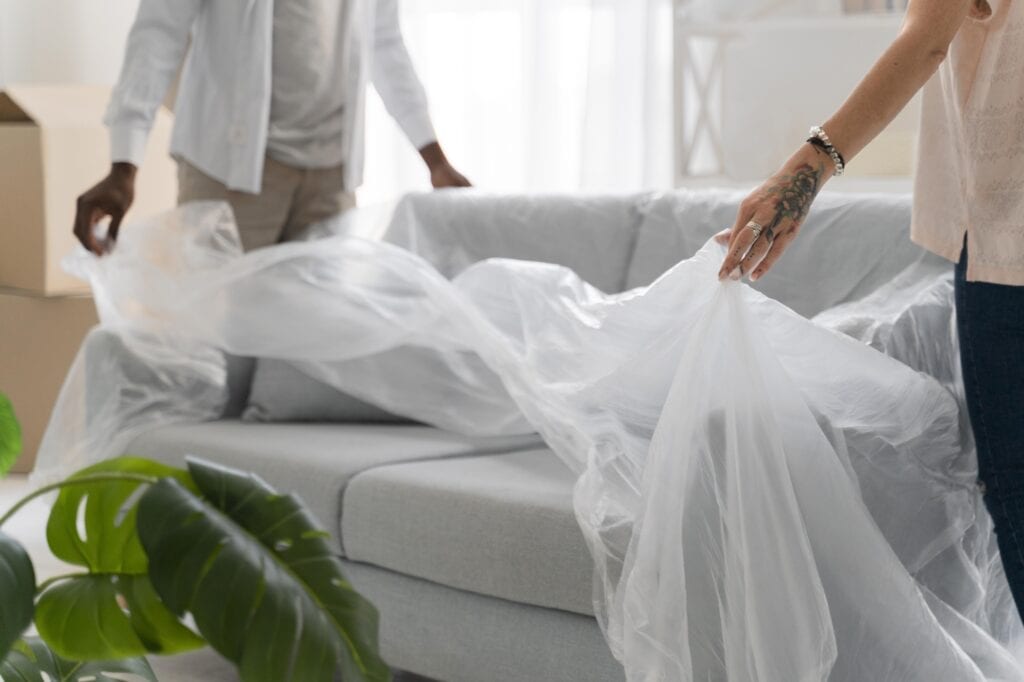
Special Care for Electronics
Electronics require special care to avoid damage during the move. Wrap each electronic device individually and use packaging materials like bubble wrap and packing peanuts to protect delicate electronics.
For items like plasma TVs, use special wooden crates or the original box if available. Avoid laying these items flat to prevent damage. These precautions help ensure your electronics arrive in perfect working condition.
Kitchen Packing Tips
Packing kitchen items requires a systematic approach due to their variety. Start packing a week before the move, prioritising items you won’t need immediately. Wrap delicate items like plates and glasses in bed sheets or towels for added protection.
Use boxes with cardboard dividers for packing glasses, and wrap them in multiple layers of paper. Clearly label boxes containing fragile items and specify their destination room to ensure careful handling and correct placement upon arrival.
Use Dish-Barrel Boxes
Dish-barrel boxes are ideal for safely packing dishes and glassware. These sturdy boxes come with dividers to keep items separated, reducing the risk of breakage during transit.
Wrap glasses in bubble wrap for protection, placing them with the widest part facing down. For plates, wrap each one individually or place disposable plates between them to prevent chipping and breakage.
Dish-barrel boxes, combined with careful wrapping, offer the best protection for your kitchenware, ensuring everything arrives at your new home intact.
Wrap Sharp Knives Carefully
Wrap sharp knives carefully to prevent injuries and maintain their integrity during the move. Double wrapping knives in paper reduces the risk of cuts. Additionally, using knife protectors can significantly enhance safety and keep the blades sharp.
Double wrapping and using protectors ensure optimal safety for sharp knives during the move. Properly securing these items protects you and your movers and guarantees that your knives remain in good condition.
Handling Hazardous Materials
Handling hazardous materials requires special attention for safety during the move. Identify hazardous items like paints, solvents, batteries, and cleaning products. These items pose risks during transport and should not be packed with other belongings.
To prevent leaks, seal the openings of toiletries with cling film and store them in zip lock bags. This extra layer of protection helps contain spills and keeps other items safe. Properly managing hazardous materials ensures a safer, smoother moving process.
Identify Hazardous Items
Identifying hazardous materials is crucial for safety during the move. Common hazardous items include:
- Paints
- Solvents
- Batteries
- Cleaning products
Keep these materials in a separate box to prevent spills and ensure safe handling.
Do not transport previously opened pots of paint as they might spill during the move. Proper identification and separation of hazardous materials mitigate risks and ensure a safe move for everyone involved.
Safe Disposal Practices
Recycle empty pots of paint or donate half-used pots to charity for safe disposal. Proper disposal practices protect the environment and reduce the risk of accidents during the move. By responsibly handling hazardous materials, you contribute to a safer and more efficient moving process.
RECOMMENDATION
Be sure to separate hazardous materials like paints, solvents, and batteries from other items to prevent spills or reactions during transit. Consider donating or recycling half-used items to minimise the risk and lighten the load, ensuring a safer, more efficient move.
Packing Clothes Efficiently
Packing clothes efficiently can save time and space during your move. Wardrobe boxes come with a bar for hangers, making it easy to transfer clothes directly from the closet to the box without folding. This method keeps clothes wrinkle-free and simplifies the moving process.
Alternatively, rolling clothes can maximise space in boxes and suitcases. Combining the use of wardrobe boxes and rolling techniques ensures that your clothing remains in good condition and is easy to access during the move.
Use Wardrobe Boxes
Wardrobe boxes are specifically designed for transporting hanging clothes without wrinkling. To pack hanging clothes effectively, use these special boxes to keep them in pristine condition. This method not only saves time but also maintains the quality of your clothing during the move.
Roll Clothes to Save Space
Rolling clothes can significantly enhance packing efficiency by maximising space in both boxes and suitcases. This technique keeps clothes organised and reduces the need for large boxes, making the moving process smoother and more manageable.
Summary
Packing for a move can be a daunting task, but with the right strategies and tips, it can become a manageable and even enjoyable process. By decluttering before you start packing, gathering quality packing materials, labelling boxes clearly, and packing an essentials box, you can ensure a smooth transition to your new home in Ealing. Additionally, protecting furniture, handling hazardous materials safely, and packing clothes efficiently are crucial steps in the moving process. Embrace these top packing tips to make your move stress-free and successful.
Frequently Asked Questions
Why is it important to declutter before moving?
Decluttering before moving is crucial as it saves money on moving costs and simplifies the packing process, allowing you to focus on your new adventure. Embrace this opportunity to lighten your load and enjoy a fresh start!
What packing materials are essential for a safe move?
For a safe move, make sure to have sturdy cardboard boxes, bubble wrap, packing paper, and heavy-duty packing tape on hand. These essentials will protect your belongings and ensure a smooth transition to your new home!
How should I label my moving boxes?
Label your moving boxes clearly with the room they came from and a brief outline of their contents using permanent markers. A colour-coded system can also help you stay organised and make unpacking a breeze!
What should I include in an essentials box?
An essentials box should definitely include toiletries, medications, important documents, and basic kitchen supplies to help you settle in smoothly. This way, you’ll feel at home right from the start!
How can I protect my furniture during a move?
To protect your furniture during a move, tightly wrap it in blankets and cover it with bubble wrap or plastic wrap, adding cardboard to corners for extra cushioning. Taking these steps will ensure your pieces arrive at your new home safely!
